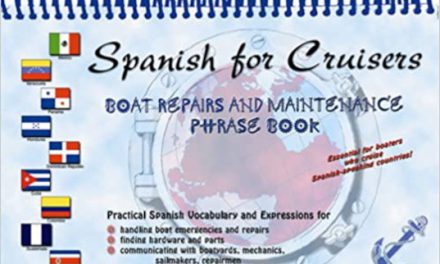BY OMAR REIS (CELESTAIRE.COM; $59.95)
REVIEWED BY DURKEE RICHARDS
Celestial navigation is alive and well even in the age of affordable GPS chart plotters. With his recent release of version 4.2 of Navigator, Omar Reis has provided the celestial navigator with a user-friendly and feature-rich navigation tool. The Star Finder module would also be of interest to stargazers.
Omar emphasizes that successful navigators are disciplined and organized. This philosophy can be sensed throughout the compact, 67-page manual that comes with the software CD. The first chapter is a succinctly written primer on celestial navigation, which can serve as a useful review for experienced navigators.
The Celestial Navigation and Star Finder modules form the heart of the celestial navigation program. The Star Finder helps the navigator “prepare the sky” — in other words to decide which celestial objects to use and also to determine the expected azimuth and altitude for each sight so that the sextant can be preset.
The Star Finder module uses a built-in perpetual almanac which includes the sun and moon, the navigational planets (Venus, Mars, Jupiter and Saturn), and the full set of navigational stars. This module also features a nice graphic display of the sky to help the user locate the objects of interest. This feature would delight any stargazer.
Sextant altitudes (and times) are reduced using the Celestial Navigation module. I found it quick and intuitive to use. For years, I have used the Nautical Almanac and a spreadsheet template to reduce celestial sights. So having all the ephemeris data built into the program was a luxury. It greatly sped up the sight reduction process while also decreasing the chance of error in data entry.
Navigator 4.2 does not include the additional pressure and temperature corrections to the atmospheric refraction that become significant for objects near the horizon. However the author wisely recommends that users select objects above 20 degrees, which generally allows for better seeing and for more accurate results.
The Celestial Navigation module also features two tools for reducing the noon sight (or more correctly the Meridian Passage). There is even a nice capability for reducing sights taken with an artificial horizon.
Navigator has one more major module — Chart Navigation — which will handle either raster or vector charts. There is an associated utility that allows the user to scan existing paper charts and import them as raster charts. Chart Navigation can also accept GPS input via industry standard NMEA GPS messages.
This is a well-designed tool for the celestial navigator. The Chart Navigation capability increases the utility of this software and should further broaden its appeal.




